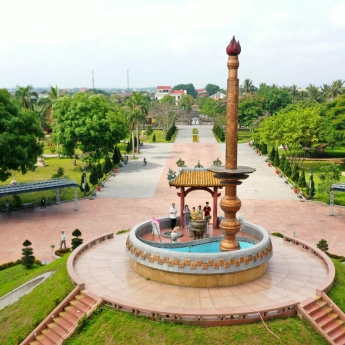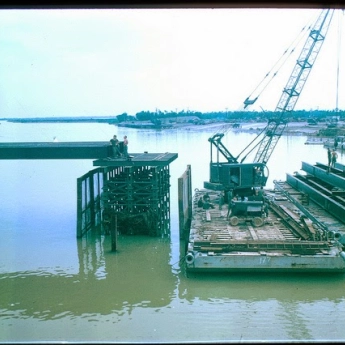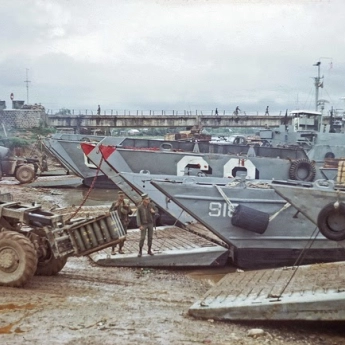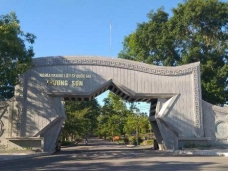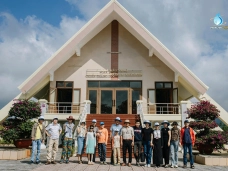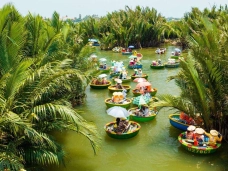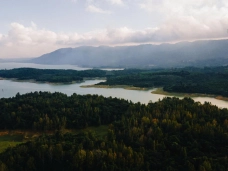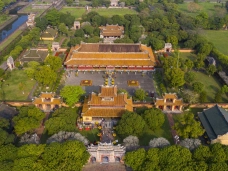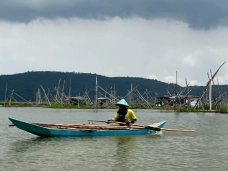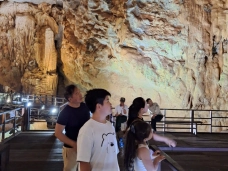Quang Tri Citadel – Where War Lives in Memory
05-05-2025 16:00
Location
Highlight Image
History of Quang Tri Ancient Citadel
Quang Tri Ancient Citadel, located in the center of Quang Tri Town, Quang Tri Province, is a designated National Special Relic of Vietnam [1]. Originally built during the reign of Emperor Gia Long (1802–1820), the citadel was initially made of earth in Tien Kien ward (now Trieu Thanh - Trieu Phong). In 1809, Emperor Gia Long ordered its relocation to Thach Han commune (its current location, now Ward 2 of Quang Tri Town). In 1837, Emperor Minh Mang rebuilt it using bricks, creating a strong architectural structure [1].
The citadel has a square shape, with a perimeter of over 2,000 meters, a height of more than 4 meters, and a base thickness of over 12 meters. It is surrounded by a moat system. At each of the four corners, there are bastions, and four main gates face the east, west, south, and north. Quang Tri Citadel served not only as a military fortification but also as the administrative center of the Nguyen Dynasty in Quang Tri from 1809 to 1945. During the French colonial period, it became a prison for political prisoners from 1929 onward [1].
During the Vietnam War, the citadel became a symbol of resilient resistance. Notably, in the summer of 1972, it witnessed the brutal 81-day battle, during which approximately 328,000 tons of bombs and shells were dropped, leaving the area in ruins. Only the eastern gate and a few wall sections survived [3].
Today, the 16-hectare relic site includes many memorial structures: a Monument with 81 steps symbolizing the 81-day battle, a mass grave designed according to the yin-yang philosophy, and a 10-meter-tall, 9-ton Bell Tower inaugurated in 2007. The Quang Tri Citadel Museum, located in the southeast corner, preserves valuable artifacts and documents from the 1972 battle, helping visitors understand the heroic history of the Vietnamese people [2].
The Battlefield Context
The battle at Quang Tri Citadel occurred during the 1972 Spring–Summer Offensive [3], an important campaign in the resistance against the United States. Quang Tri was chosen as one of the three key targets, along with the Central Highlands and Southeastern region (Binh Long). The citadel's strategic position near National Highway 1 made it a critical defense point for the Republic of Vietnam in Military Region I.
Prior to this, the Paris Peace Talks had put pressure on the South Vietnamese and U.S. governments, especially after the Liberation Army had defeated Operation Lam Son 719 and gained control of strategic areas in Dak To, the Central Highlands, and the Southeast. These victories strengthened the negotiating position of the Provisional Revolutionary Government of the Republic of South Vietnam and the Democratic Republic of Vietnam [4].
In March 1972, the Liberation Army launched the Tri-Thien Campaign and by May 1 had taken full control of Quang Tri Province, including the citadel. In response, on May 25, President Nguyen Van Thieu vowed to retake Quang Tri, accusing the U.S. of abandoning its ally amid growing calls in the U.S. Congress for troop withdrawals. By mid-June, the U.S. and South Vietnam launched Operation Lam Son 72, aimed at recapturing the citadel.
The battle began on June 28, 1972, and lasted until September 16, 1972—a total of 81 days and nights. During this time, the citadel became a fierce battlefield, with the Liberation Army resisting intense counterattacks from South Vietnamese forces supported by U.S. air and artillery strikes. Historical sources indicate that approximately 328,000 tons of bombs, including B-52 strikes, were dropped on an area less than 3 square kilometers. Most Liberation Army fighters perished and were buried beneath the soil [5].
This battle had not only military significance but also contributed to the anti-war movement in the U.S., hastening the signing of the Paris Peace Accords. It is considered one of the fiercest battles of the Vietnam War, involving over 14,000 Liberation Army troops, 35,000 South Vietnamese soldiers, and significant U.S. air support [5].
Historical Lessons
The defense of Quang Tri Citadel is a vivid lesson in patriotism, revolutionary heroism, and the indomitable will of the Vietnamese army and people. According to [5], the battle demonstrated a firm commitment to protecting national independence, freedom, and territorial integrity, contributing significantly to the victory of the resistance against the United States.
More than 4,000 soldiers sacrificed their lives in this battle, leaving behind invaluable lessons in courage, national pride, and revolutionary tradition. Their sacrifice continues to inspire younger generations, fostering a strong sense of national identity and resilience. The historical values of the citadel are used to educate youth about their responsibility to protect the homeland, especially in the context of modern national development and integration.
The battle also highlighted the importance of unity and flexible military strategy. Despite facing superior firepower, the Liberation Army defended the citadel with determination, shaking the enemy’s will. The victory in Quang Tri accelerated the signing of the Paris Peace Accords [6] on January 27, 1973, paving the way for the ultimate victory in 1975 and national reunification [4].
A Hope for Peace
The battle at Quang Tri Citadel reflects the Vietnamese people’s burning desire for independence, freedom, and national unity. The enormous sacrifices made by soldiers led to the end of the war through the Paris Peace Accords, bringing peace in 1973 and reunification in 1975. According to [5], President Ho Chi Minh’s saying, “Nothing is more precious than independence and freedom,” remains the guiding light for national development and defense.
Today, Quang Tri Citadel is not only a historical monument but also a symbol of peace and reconciliation. The site regularly hosts memorial ceremonies, such as flower lantern releases on the Thach Han River for Martyrs’ Day (July 27) and monthly “Lantern Nights” on the 14th of the lunar calendar. The green trees, memorials, and museum all serve as powerful reminders of the cost of war and the importance of preserving peace.
The citadel is also a place of education for younger generations, emphasizing the value of peace and encouraging them to contribute to a just, compassionate, and war-free society. Development projects are underway to transform the site into a cultural park, with features like a central monument, museum, and landscaped gardens—honoring history while nurturing the everlasting desire for peace.
Phong Nha Viet
References
- Thành Cổ Quảng Trị – Wikipedia tiếng Việt. https://vi.wikipedia.org/wiki/Th%C3%A0nh_c%E1%BB%95_Qu%E1.BB%8B
- Thành cổ Quảng Trị - Di tích quốc gia đặc biệt. https://phongnhaexplorer.com/cam-nang-du-lich-mien-trung/thanh-co-quang-tri.html
- Trận Thành cổ Quảng Trị – Wikipedia tiếng Việt. https://vi.wikipedia.org/wiki/Tr%E1%BA%A3n_Th%C3%A0nh_c%E1%BB%95_Qu%E1.BB%8B
- Vì sao Thành cổ Quảng Trị là nơi đọ sức quyết liệt nhất giữa Việt Nam và Mỹ 50 năm trước? | Báo Dân trí. https://dantri.com.vn/xa-hoi/vi-sao-thanh-co-quang-tri-la-noi-do-suc-quyet-liet-nhat-giua-viet-nam-va-my-50-nam-truoc-20220502082355813.htm
- Cuộc chiến đấu bảo vệ Thành cổ Quảng Trị năm 1972. https://www.tapchicongsan.org.vn/web/guest/quoc-phong-an-ninh-oi-ngoai1/-/2018/825600/cuoc-chien-dau-bao-ve-thanh-co-quang-tri-nam-1972---khat-vong-doc-lap%2C-tu-do-cua-dan-toc-viet-nam.aspx
- Hiệp định Paris về Việt Nam. https://vi.wikipedia.org/wiki/Hi%E1%BB%87p_%C4%91%E1%BB%8Bnh_Paris_v%E1%BB%81_Vi%E1%BB%87t_Nam




